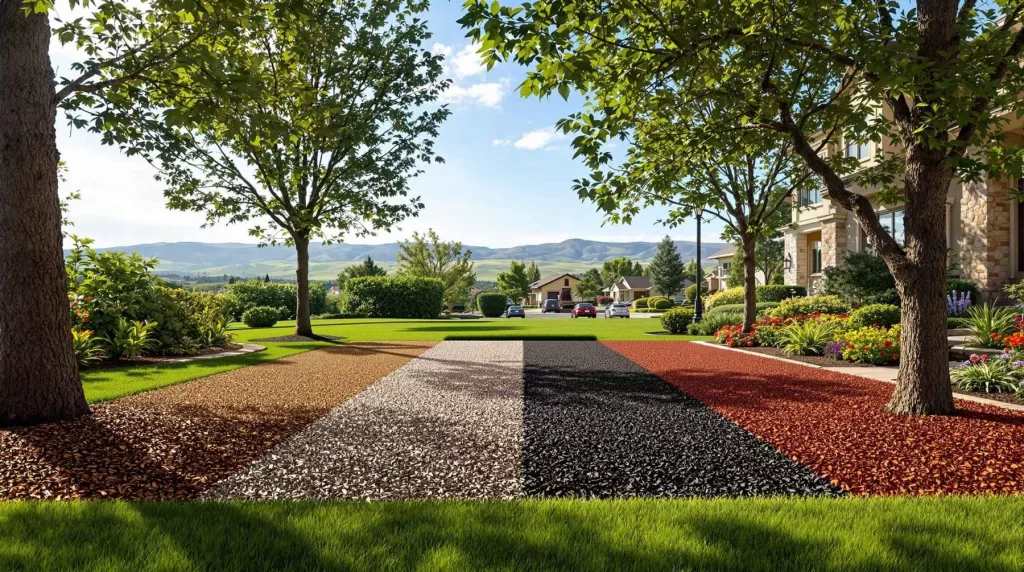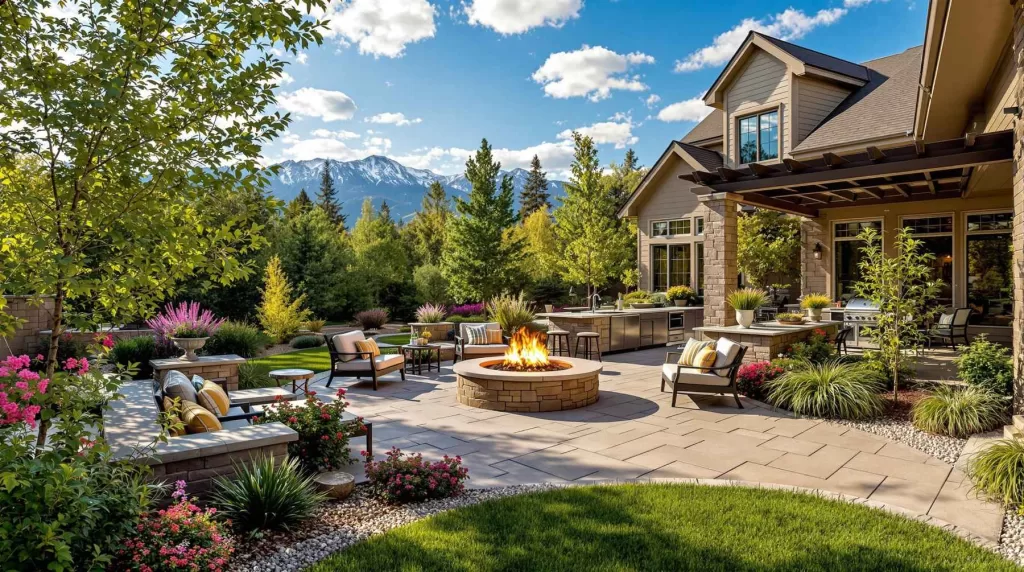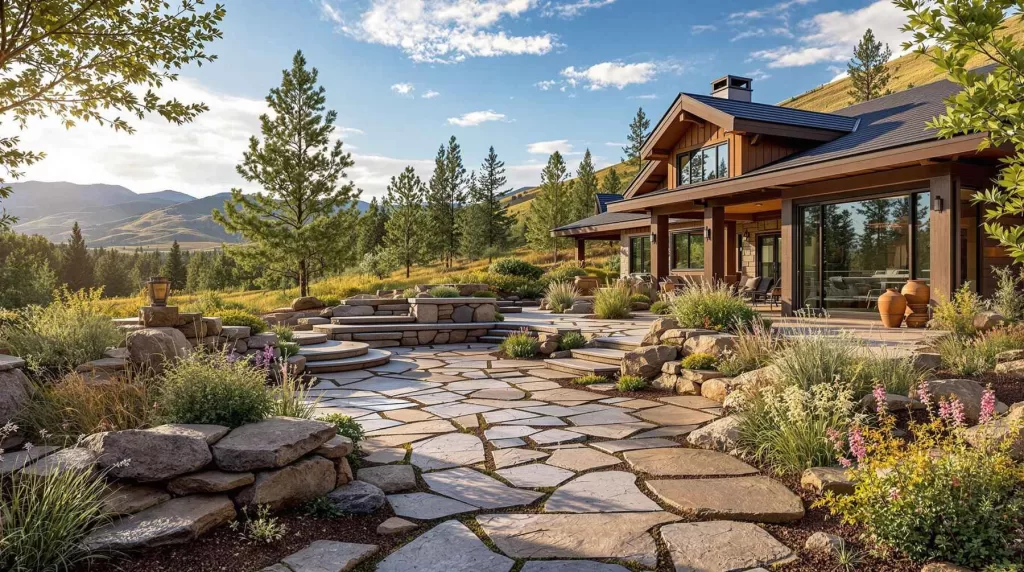Introduction
Weeds may seem like a minor inconvenience, but in Castle Pines, they can quickly overrun even the most carefully designed landscape. With the right natural methods, however, you can protect your yard without resorting to harsh chemicals. This blog will walk you through proven, eco-friendly strategies tailored to Castle Pines’ unique elevation and climate, so your outdoor space stays healthy and weed-free all season long.
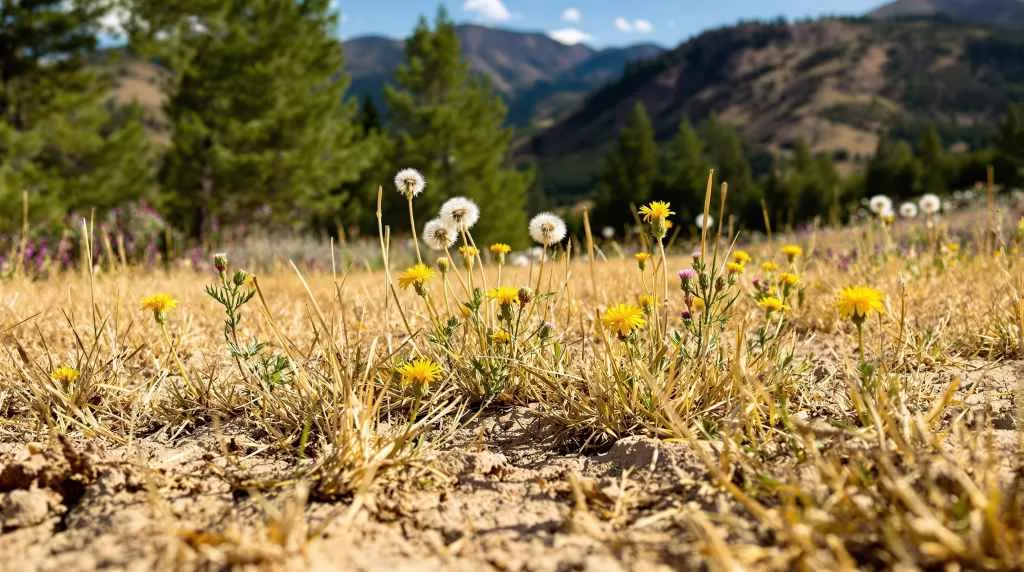
Why Weeds Are a Problem in Castle Pines
If you’re focused on beautiful and sustainable outdoor spaces, understanding the root causes of weed problems is key. Due to its unique location and elevation, Castle Pines is especially prone to weed outbreaks that can disrupt even well-planned yards. That’s why many homeowners turn to local experts to ensure their outdoor space is set up for long-term success from the start.
The Impact of Elevation and Climate
At over 6,300 feet above sea level, Castle Pines experiences significant temperature swings and periods of drought that make it ideal for opportunistic weeds. Native grasses may struggle while fast-spreading invaders take advantage of bare soil and disturbed ground.
How Weeds Harm Your Landscape
Weeds aren’t just unsightly — they compete aggressively with your turf, trees, and ornamental plants for water, nutrients, and sunlight. This can weaken your entire landscape, increase maintenance needs, and reduce your curb appeal over time.
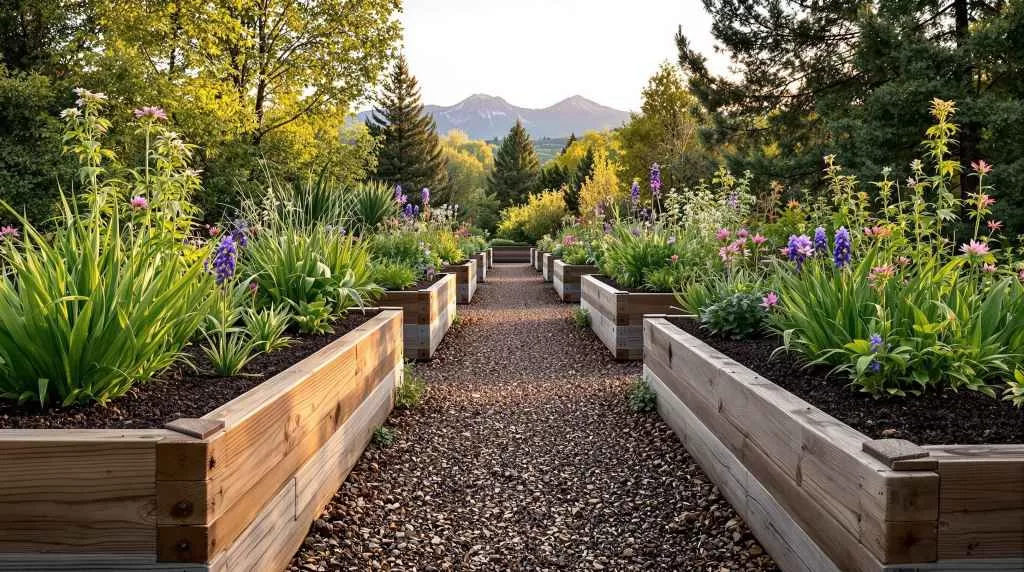
Start with Soil Health
One of the most overlooked but essential steps in weed prevention is improving soil health. A knowledgeable landscaper understands that when your soil is nutrient-rich and biologically active, your plants can thrive — and weeds will struggle to compete.
Conduct a Soil Test
Before doing anything else, it’s important to test your soil’s pH and nutrient levels. Knowing whether your soil is too acidic or lacking key minerals allows you to correct it early, giving your turf and plants a strong advantage over weeds.
Amend with Organic Matter
Adding compost or well-aged manure enriches your soil, helps it retain moisture, and improves overall structure. Healthy soil holds nutrients better and promotes deeper root systems, which naturally choke out weed growth by leaving no room for intruders.
Encourage Beneficial Microbes
Soil teeming with beneficial bacteria and fungi creates an environment where weeds struggle to gain a foothold. You can encourage this by adding worm castings, compost tea, or mycorrhizal inoculants that boost microbial diversity and support stronger plant roots.
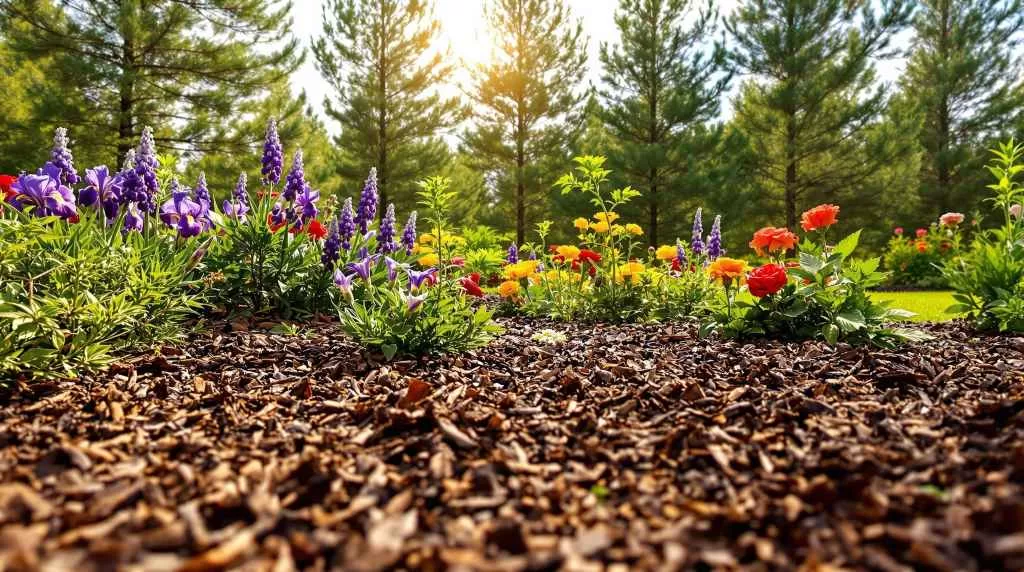
Mulching the Right Way
Mulch is one of the most effective natural weed barriers you can use in Castle Pines. When applied correctly, it blocks sunlight from reaching weed seeds, stabilizes soil temperatures, and retains moisture — all while adding visual appeal to your yard.
Types of Mulch That Work Best in Castle Pines
Organic mulches like shredded cedar, bark nuggets, and pine needles perform well in Castle Pines’ dry climate. These materials break down slowly, enrich the soil over time, and blend beautifully with natural landscape designs common in the area.
How to Apply Mulch Effectively
Apply mulch in a layer about 2–3 inches thick, taking care not to pile it against tree trunks or plant stems. Even coverage helps smother emerging weeds and insulate plant roots, but too much can lead to rot or pest issues.
When to Reapply or Replace Mulch
Mulch should be refreshed once or twice a year, typically in early spring and mid-fall, depending on how much it’s broken down or been displaced. If you start to see bare patches or a crust forming, it’s time for a top-off or full replacement.
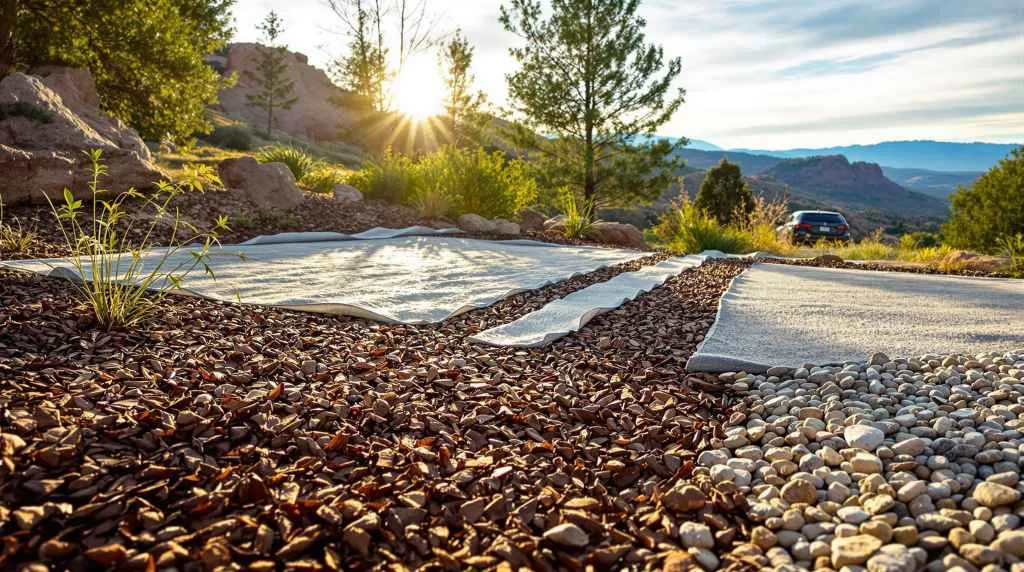
Use Natural Weed Barriers
Physical weed barriers can be a highly effective way to stop weeds before they start, especially in high-traffic or hard-to-maintain areas. A knowledgeable local landscaper can help you select and install the right type of barrier for each part of your Castle Pines yard.
Landscape Fabric vs. Biodegradable Options
Traditional woven landscape fabric can provide long-term weed suppression, especially under decorative rock or gravel. For more eco-conscious projects, biodegradable paper mulch or jute mats offer a natural solution that breaks down over time while still blocking light from weed seeds.
Proper Installation Techniques
To be effective, weed barriers must be installed with tight seams and full coverage. Overlap edges by at least 6 inches, secure the material with landscape staples, and top it with mulch or gravel to prevent sunlight exposure and hold it in place.
Common Mistakes to Avoid
Avoid using plastic sheeting, which can trap moisture and suffocate your soil. Also steer clear of cutting holes too large around plants, as this invites weeds to sneak in. Leaving fabric exposed to sunlight will degrade it quickly and reduce its effectiveness.
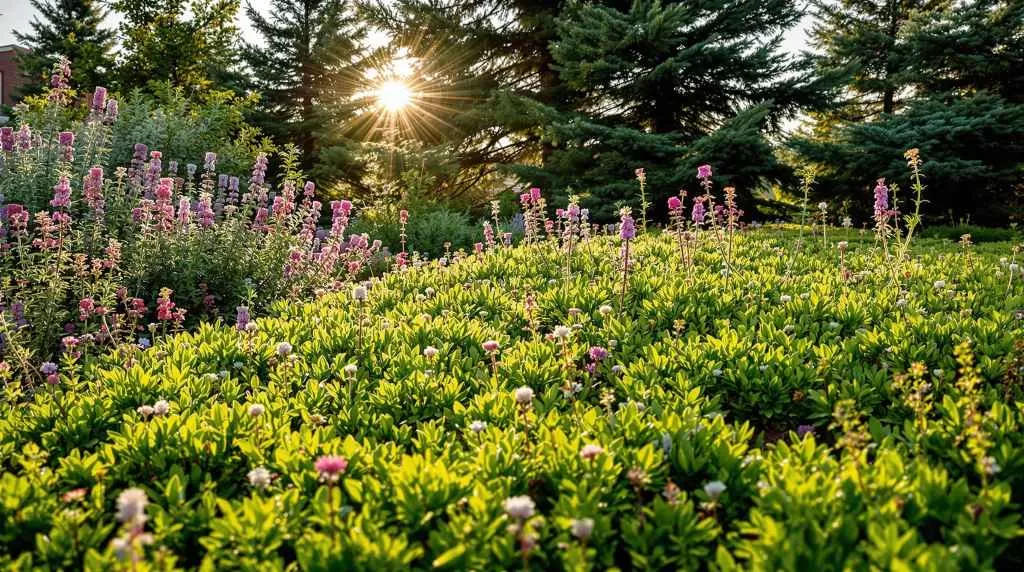
Strategic Plant Selection
The plants you choose play a major role in how well your yard resists weeds. An experienced outdoor design team can help create a planting plan that’s not only visually appealing but also naturally suppresses weeds through thoughtful spacing and ground coverage.
Drought-Tolerant Ground Covers
Ground cover plants such as creeping thyme, ice plant, and sedum thrive in Castle Pines’ dry conditions and spread quickly to form a living mulch. These plants cover bare soil, helping retain moisture while blocking sunlight from reaching weed seeds.
Densely Planted Beds
When plants are spaced close together, they shade the ground and leave little room for weeds to establish themselves. Dense planting also creates a layered, full appearance that enhances curb appeal and reduces ongoing maintenance.
Avoiding Invasive Species
Some popular landscape plants — like mint or bishop’s weed — can become invasive and lead to uncontrolled spreading that mimics the behavior of weeds. Choosing native or non-invasive species ensures you’re building a balanced, low-maintenance garden from the start.
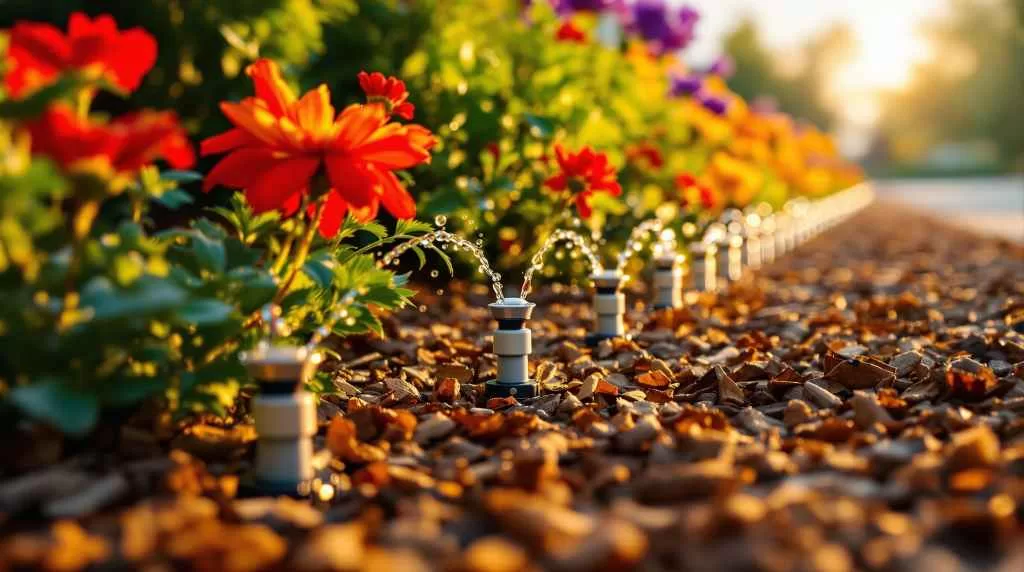
Watering Techniques That Discourage Weeds
Watering isn’t just about keeping your plants healthy — it also plays a huge role in weed control. A skilled Irrigation Designer can help you develop a system that hydrates your landscape efficiently without encouraging weed growth in unwanted areas.
Use Drip Irrigation
Drip irrigation delivers water directly to plant roots, which not only conserves water but also minimizes moisture in surrounding soil — where weed seeds might otherwise sprout. It’s especially useful in garden beds and around trees and shrubs.
Water Deeply and Infrequently
Frequent shallow watering encourages surface-level weeds to grow. Instead, watering deeply but less often strengthens your desired plants while keeping the topsoil dry and less inviting to weed seeds.
Avoid Overwatering
Too much water creates the perfect environment for weeds, especially in shady or compacted areas where drainage is poor. Monitoring your system to prevent puddles and runoff keeps your soil balanced and reduces the chances of weed flare-ups.
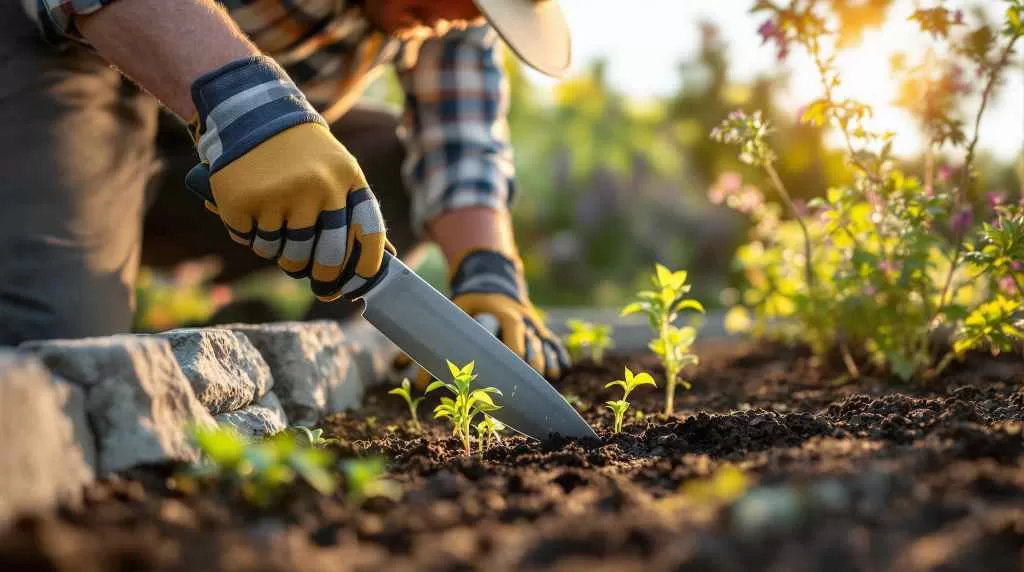
Natural Weed Removal Methods
Even with the best prevention methods, some weeds will still sneak through — but you don’t need chemicals to deal with them. These natural, non-toxic strategies are effective for spot treatments and ongoing maintenance in Castle Pines yards.
Hand-Pulling Techniques
Pulling weeds by hand is one of the most straightforward approaches, especially right after rainfall when the soil is soft. Using tools like a dandelion weeder or Hori Hori knife makes the job easier and helps remove the entire root system to prevent regrowth.
Boiling Water and Vinegar Sprays
Pouring boiling water directly onto weeds in hardscape areas like driveways and patios kills them instantly. For a natural spray, household vinegar (5% acetic acid) can be effective on young weeds, though it may take repeated applications and should be used carefully near desired plants.
Flame Weeding
Flame weeders use intense heat to burst the cells of weeds, causing them to die within hours. This method is ideal for gravel paths, cracks in pavement, and non-flammable mulch beds, but should never be used near dry grass or combustible materials.
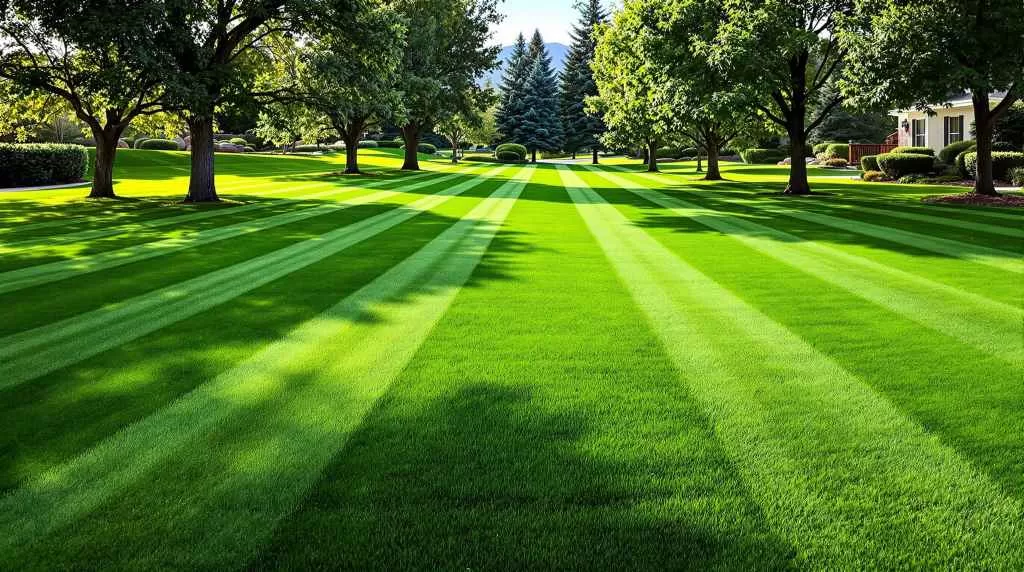
Maintain a Healthy Lawn
A lush, healthy lawn naturally crowds out weeds by covering the soil and creating dense root competition. With the right care habits, your lawn can become its own defense system against unwanted growth in Castle Pines.
Mow at the Right Height
Mowing too short stresses your grass and opens space for weeds to thrive. Instead, aim to mow cool-season grasses like Kentucky bluegrass and fescue to a height of 3–3.5 inches, which helps shade the soil and block weed seed germination.
Fertilize Naturally
Use organic fertilizers, compost tea, or worm castings to feed your lawn without synthetic chemicals. These options enrich the soil and promote thick turf, giving your grass everything it needs to fight off weeds without extra help.
Aerate and Overseed Regularly
Aerating reduces compaction and improves nutrient absorption, while overseeding fills in bare patches that weeds love to exploit. In Castle Pines, it’s best to aerate and overseed in early fall, when temperatures cool and the soil is still workable.
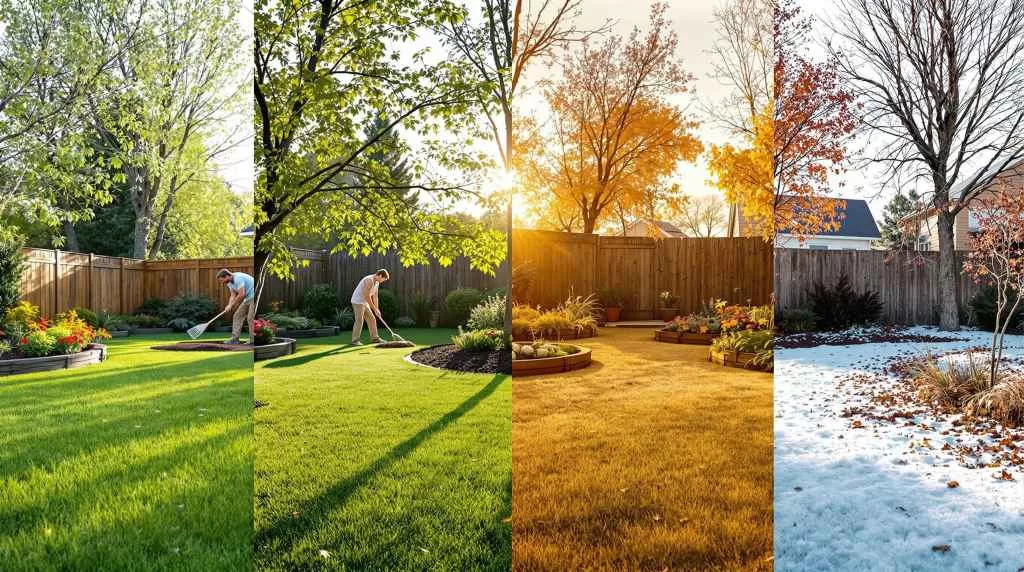
Seasonal Weed Prevention Strategies
Timing matters when it comes to weed control. Taking a seasonal approach helps you stay ahead of weeds before they have a chance to take root. During a landscaping consultation, a pro can help tailor your strategy to match Castle Pines’ unique growing cycles.
Spring Prep Tips
Spring is when many weeds begin to germinate, so it’s the perfect time to apply mulch, compost, or corn gluten meal to suppress early growth. Clearing dead plant matter and refreshing garden beds now will give your desired plants a head start.
Summer Maintenance
Weeds thrive in heat and sunlight, so summer requires vigilance. Regular mowing, targeted hand-pulling, and maintaining drip irrigation can keep weed growth under control without letting the problem escalate.
Fall and Winter Planning
In fall, focus on overseeding, aerating, and fertilizing to strengthen your lawn before winter sets in. During the off-season, apply a fresh mulch layer and take note of areas where weeds were most persistent so you can address them early next year.
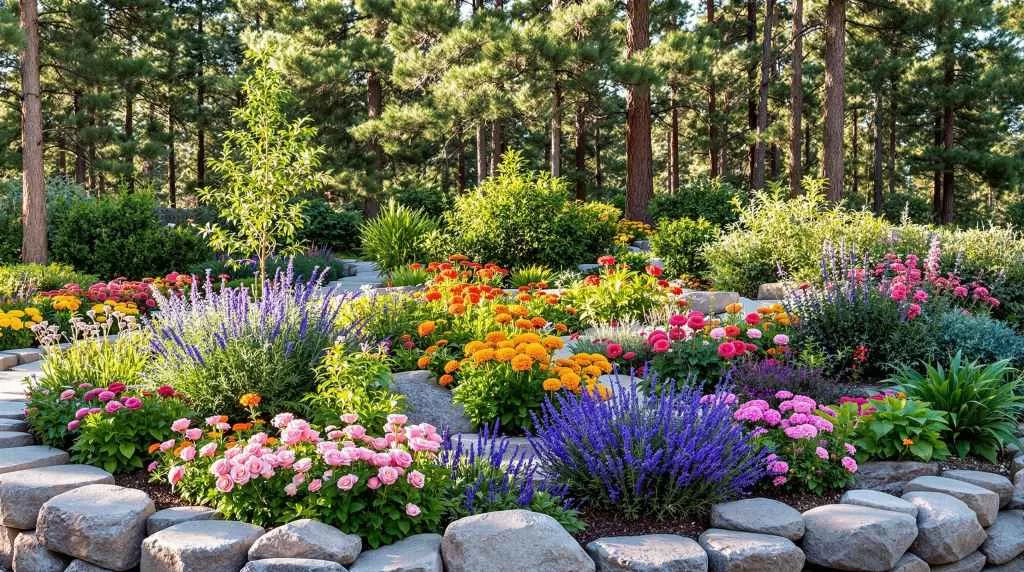
Companion Planting and Garden Design
The layout of your yard and the plants you choose to place together can have a big impact on weed control. A skilled landscape designer can create a planting plan that not only looks great but also uses nature’s own logic to discourage weed growth through thoughtful design.
Pairing Plants to Deter Weeds
Certain plant pairings provide natural weed suppression by filling in soil gaps or releasing root chemicals that deter weeds. For example, interplanting low-growing herbs like thyme or oregano between taller flowers or vegetables creates a living carpet that reduces open soil exposure.
Edging Beds to Limit Spread
Defining garden beds with stone, steel, or paver edging helps keep invasive grasses and weeds from creeping into your mulch or flower beds. Edging also gives your yard a cleaner, more organized look while reducing the need for constant trimming.
Design with Weed Prevention in Mind
Good garden design includes layered plantings, curved bed lines, and minimal bare soil, all of which reduce opportunities for weeds to settle in. Using hardscape features like gravel paths and raised beds can further break up weedy zones and direct your maintenance energy where it matters most.
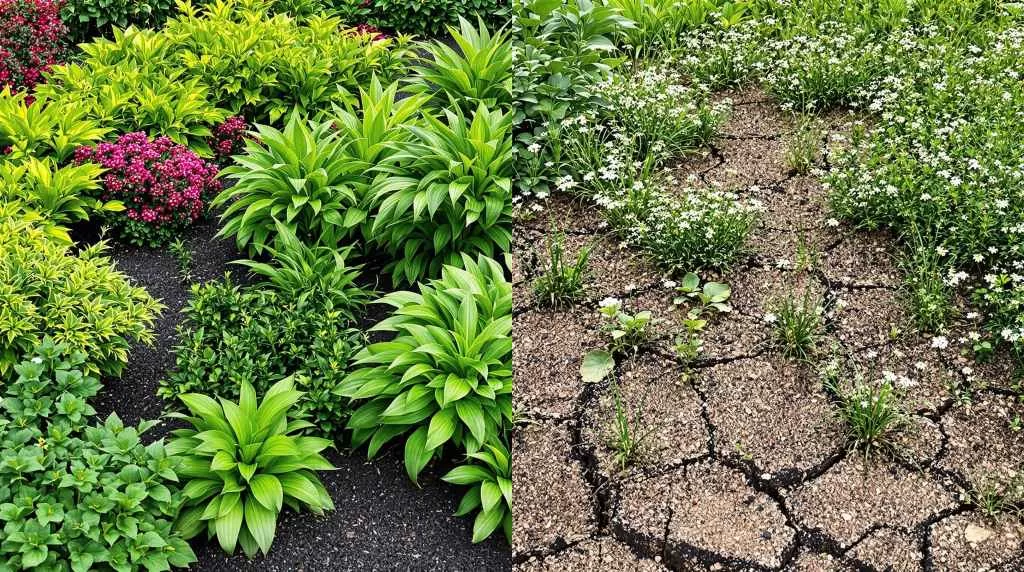
Avoiding Common Natural Weed Control Mistakes
Natural weed control works — but only if you avoid the missteps that can undo your hard work. Many homeowners unintentionally create conditions that let weeds thrive, even when using eco-friendly methods.
Expecting Immediate Results
Natural solutions often take time to show full results. Unlike synthetic herbicides, they require consistency and patience, especially when working with soil health, mulching, or microbial activity. Expect gradual improvement rather than overnight success.
Overusing One Method
Relying too heavily on one tactic, like vinegar or mulch alone, can limit your results. The best weed prevention strategy is layered and adaptive, combining soil improvements, planting choices, and manual techniques for a more resilient outcome.
Ignoring Your Yard’s Microclimates
Every yard has areas with different light, moisture, and wind conditions, which affect weed pressure. Shady corners might need different ground covers than sunny slopes. Recognizing and adapting to these microclimates helps you apply the right prevention method in the right place.
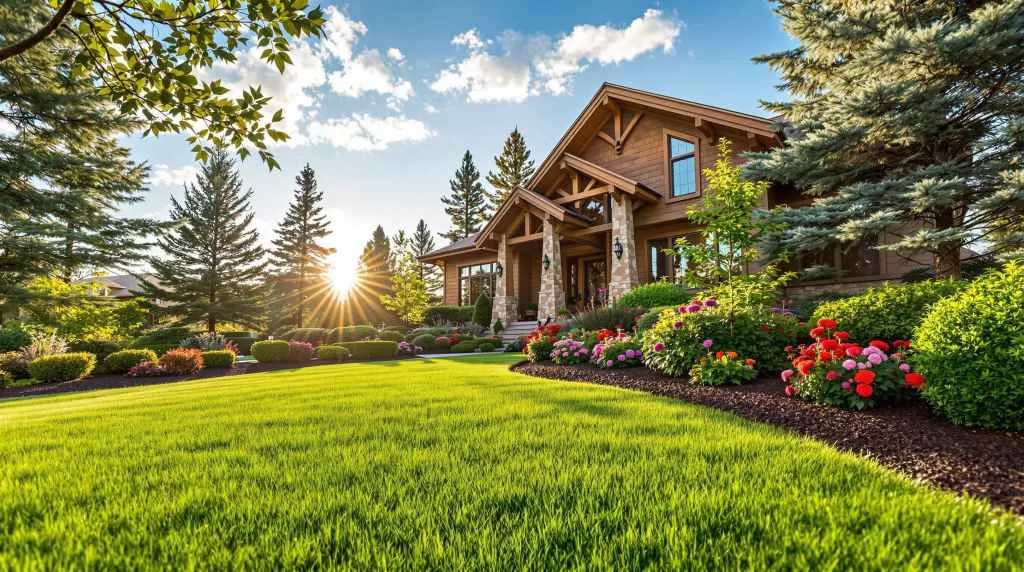
How Local Regulations Affect Weed Control
Castle Pines has community standards in place to keep neighborhoods looking clean and well-maintained. Understanding these local landscaping guidelines can help you stay compliant while still using natural methods to manage weeds effectively.
Understanding Castle Pines HOA Guidelines
Most HOAs in Castle Pines require yards to be kept free of visible weeds and may have rules about mulch color, approved plant lists, or the use of non-living ground covers. Knowing these rules upfront helps avoid fines or the need to redo parts of your landscape.
Natural Methods That Stay HOA-Compliant
Fortunately, many natural strategies like mulching, dense planting, and drip irrigation are fully HOA-approved. These techniques not only prevent weeds but also maintain a tidy, polished look that meets community standards.
When to Consult a Professional
If you’re unsure how to meet HOA expectations using natural methods, a professional can help. A local expert will ensure your landscape is beautiful, functional, and fully compliant, saving you time and potential headaches down the road.
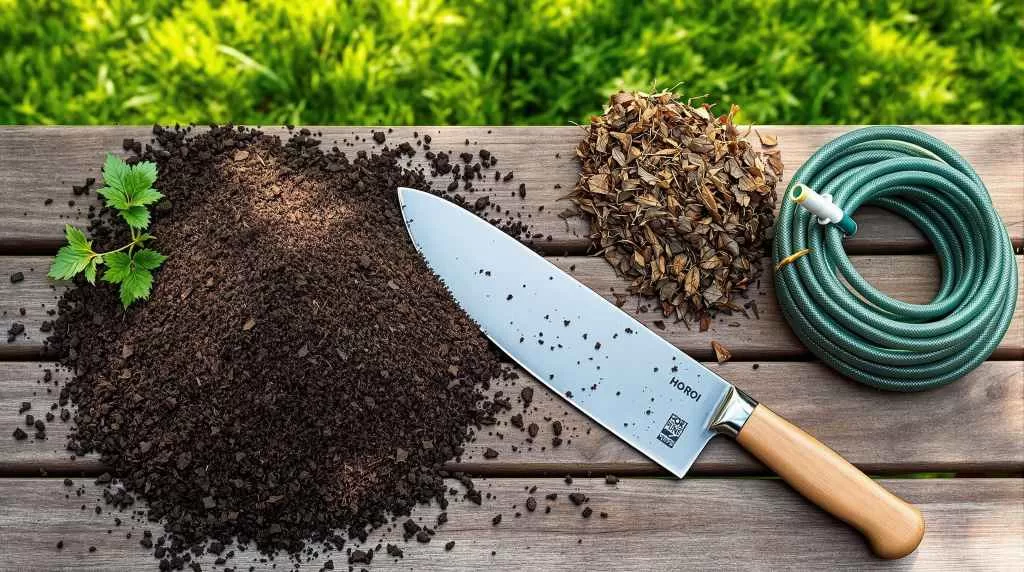
Trusted Tools and Supplies for Natural Weed Control
Having the right tools and materials makes natural weed control easier, more effective, and less time-consuming. These essential items help you tackle weeds efficiently without relying on harsh chemicals.
Hand Tools and Weeding Aids
Invest in ergonomic hand tools like a Hori Hori knife, stand-up weed puller, or loop hoe to remove weeds with precision and minimal strain. These tools allow you to get to the root system without disturbing nearby plants or soil structure.
Organic Mulch and Compost Providers
Look for local suppliers that offer natural mulch and compost made from untreated wood, leaves, or grass clippings. These products not only suppress weeds but also improve soil fertility and texture as they decompose over time.
Drip Irrigation Kits and Soil Amendments
Starter drip irrigation kits are widely available and easy to install for gardens, trees, and flower beds. Pair them with organic soil amendments like worm castings, kelp meal, or compost tea to improve your soil health while targeting hydration right where it’s needed.
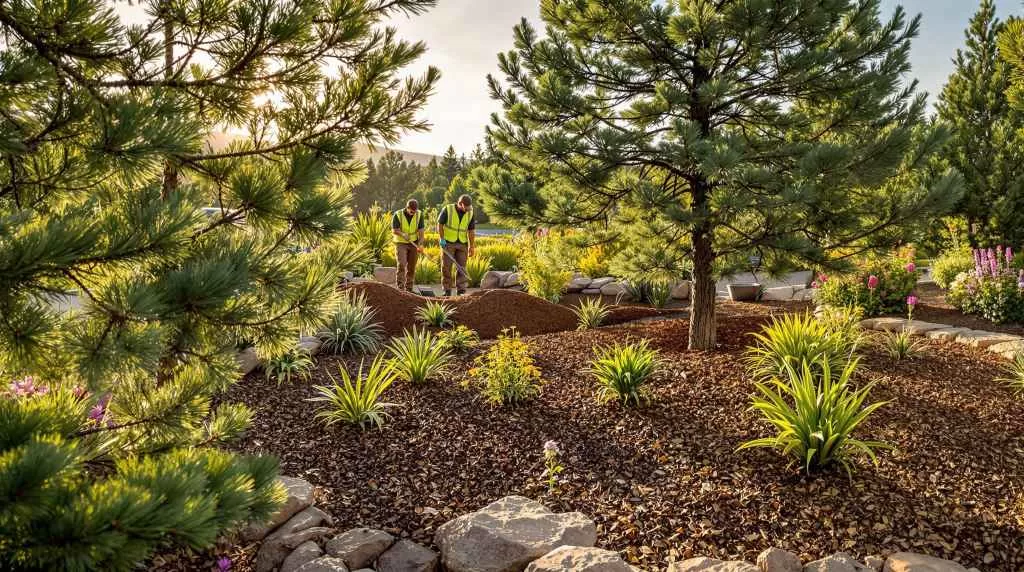
Professional Help for Castle Pines Homeowners
Sometimes, DIY methods only go so far — especially in larger or more complex outdoor spaces. Bringing in an experienced professional ensures your yard stays weed-free and is designed for long-term success using the right combination of natural techniques.
When DIY Isn’t Enough
If weeds are overtaking your yard faster than you can pull them, or if you’re dealing with erosion, compaction, or poor drainage, it may be time to bring in a pro. A landscape professional can assess the situation and apply solutions that go beyond surface-level fixes.
What to Expect from a Natural Landscaping Company
A company that specializes in eco-friendly practices will offer services like soil testing, compost application, proper mulching, and native plant selection. They can also install drip irrigation systems and weed barriers with expert precision to prevent future issues.
Why Local Experience Matters
Castle Pines presents unique challenges like elevation, clay-heavy soils, and HOA restrictions. Hiring someone familiar with the area ensures your landscape is tailored to local conditions, leading to fewer weeds and a healthier yard with less effort.
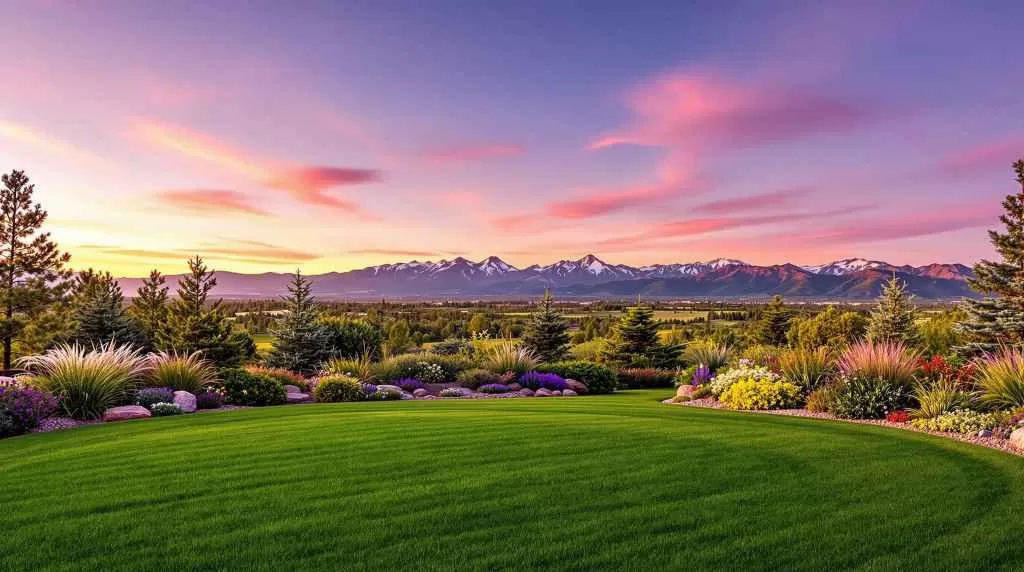
Ready to Transform Your Outdoor Space?
If you’re ready to ditch the chemicals and enjoy a clean, low-maintenance yard, we’re here to help. Our team specializes in natural weed prevention and custom landscape solutions tailored specifically for Castle Pines and nearby areas like Castle Rock, Parker, and Lone Tree. Whether you’re starting from scratch or refreshing an existing yard, we’ll design a plan that looks great and keeps weeds under control. Reach out today to schedule your consultation and take the first step toward a healthier, weed-free landscape you’ll love coming home to.

